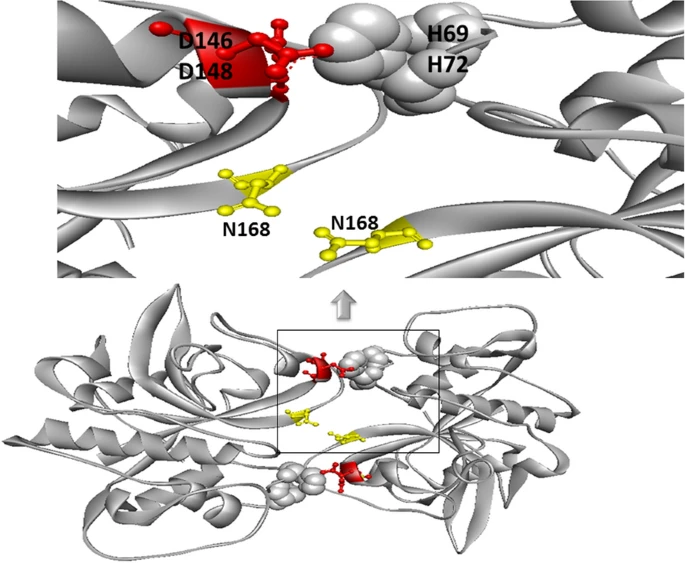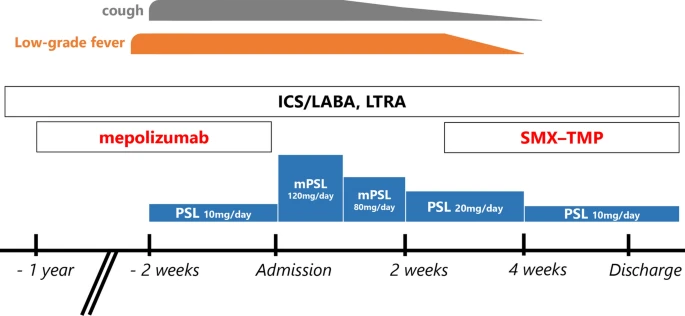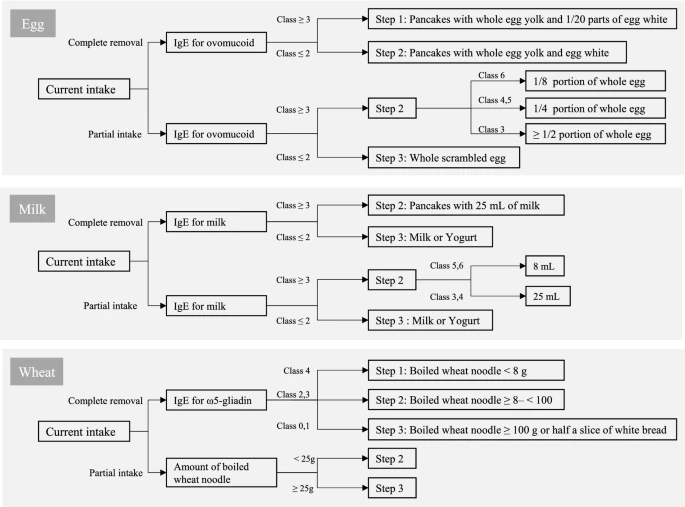Cleaning workers represent a significant proportion of the active population worldwide, with poor remuneration, particularly in developing countries. Despite this, they remain a relatively poorly studied occupational group. They are constantly exposed to agents that can cause symptoms and respiratory problems. This study aimed to evaluate upper airway inflammation in professional cleaning workers in three different occupational settings by comparing nasal cytology inflammation and clinical profiles.
A blog that publishes updates and open access scientific papers about allergy, asthma and immunology. Editor: Juan Carlos Ivancevich, MD. Specialist in Allergy & Immunology
April 30, 2022
Impact of oligomerization on the allergenicity of allergens
- Review
- Open Access
- Amin Moradi Hasan-Abad,
- Mohsen Mohammadi,
- Hamed Mirzaei,
- Mohsen Mehrabi,
- Hossein Motedayyen &
- Reza Arefnezhad
Clinical and Molecular Allergy volume 20, Article number: 5 (2022)
Abstract
Type I hypersensitivity (allergic reaction) is an unsuitable or overreactive immune response to an allergen due to cross-link immunoglobulin E (IgE) antibodies bound to its high-affinity IgE receptors (FcεRIs) on effector cells. It is needless to say that at least two epitopes on allergens are required to the successful and effective cross-linking. There are some reports pointing to small proteins with only one IgE epitope could cross-link FcεRI-bound IgE through homo-oligomerization which provides two same IgE epitopes. Therefore, oligomerization of allergens plays an indisputable role in the allergenic feature and stability of allergens.
April 26, 2022
Refractory flare-up of severe bronchial asthma controlled with mepolizumab due to Pneumocystis pneumonia: a case report
- Case report
- Open Access
- Kazuya Takeda,
- Toshiyuki Sumi,
- Yuta Nagahisa,
- Keigo Matsuura,
- Motoki Sekikawa,
- Hiroki Watanabe,
- Yuichi Yamada &
- Hirofumi Chiba
Allergy, Asthma & Clinical Immunology volume 18, Article number: 35 (2022)
Abstract
Background
Biologics dramatically improve symptoms of severe asthma; however, various exacerbating factors may induce flare-up. Pneumocystis spp. have not been reported as a cause of asthma exacerbation during biologic use, although patients with severe asthma have high levels of antibodies against Pneumocystis spp.
Case presentation
An 87-year-old female with severe asthma that was well-controlled with mepolizumab, who developed a steroid-resistant refractory flare-up. Chest computed tomography showed bilateral ground glass opacities, and results of polymerase chain reaction tests on induced sputum were positive for Pneumocystis DNA.April 22, 2022
Deep learning for spirometry quality assurance with spirometric indices and curves
- Research
- Open Access
Abstract
Background
Spirometry quality assurance is a challenging task across levels of healthcare tiers, especially in primary care. Deep learning may serve as a support tool for enhancing spirometry quality. We aimed to develop a high accuracy and sensitive deep learning-based model aiming at assisting high-quality spirometry assurance.
April 20, 2022
Maximal inspiratory and expiratory flow at moderate altitude: a study of a Latin American population
Research - Open Access
Laura Gochicoa-Rangel, Keylin Yaoska Rodríguez-Peralta, Ana Karen Gutiérrez-Bautista, Carlos Guzmán-Valderrábano, Rosario Fernández-Plata, Luis Torre-Bouscoulet & David Martínez-Briseño
BMC Pulmonary Medicine volume 22, Article number: 147 (2022)
Abstract
Background
Peak inspiratory and expiratory flows (PIF, PEF) are parameters used to evaluate the mechanics of the respiratory system. These parameters can vary based on whether they are measured using mechanical devices vs. spirometry and based on the barometric pressure at which the measurements are obtained. Our objectives were (1) to report the normal values and variability of PEF and PIF of a Latin American population living at a moderate altitude (2240 m above sea level), (2) to analyze the adjustment of reference values obtained at sea level with those obtained in healthy subjects living at a moderate altitude, and (3) to assess the correlation between PEF obtained by spirometry (PEFs) and PEF obtained by mechanical devices (PEFm).
April 19, 2022
Oropharyngeal symptoms without systemic reactions as a risk factor for food allergen intolerance: a longitudinal pediatric study
- Research
- Open Access
Allergy, Asthma & Clinical Immunology volume 18, Article number: 34 (2022)
Abstract
Background
The determinants of tolerance to food allergens are not fully understood. We aimed to elucidate the longitudinal association between oropharyngeal symptoms without systemic reactions (OSw/oS) and tolerance to food allergens.
Methods
We included all patients diagnosed with single food allergy to egg (n = 121), milk (n = 55), and wheat (n = 41) using the oral food challenge test (OFC) from 2014 to 2017. These patients received oral immunotherapy at home and/or in the hospital after diagnosis by OFC. We compared the incidence proportion of tolerance within 2 years by OSw/oS and other variables for 217 patients with food allergy. We defined OSw/oS as isolated symptoms of oropharyngeal discomfort that occurred after ingestion of a safe dose of the allergenic food determined by the OFC in the first 6 months.
April 16, 2022
Allergens sensitization among children with allergic diseases in Shanghai, China: age and sex difference
- Research
- Open Access
Abstract
Background
The distribution of allergens has geographic characteristics. Local epidemiological data provides evidence-based strategies for the prevention and management of allergic diseases. Age and sex differences may exist in the prevalence of sensitivity to various allergens. We investigated the distribution of common allergens in allergic children in Shanghai, southeastern China.
April 14, 2022
A serological biomarker of type I collagen degradation is related to a more severe, high neutrophilic, obese asthma subtype
Asthma Research and Practice volume 8, Article number: 2 (2022)
Abstract
Background
Asthma is a heterogeneous disease; therefore, biomarkers that can assist in the identification of subtypes and direct therapy are highly desirable. Asthma is a chronic inflammatory disease that leads to changes in the extracellular matrix (ECM) by matrix metalloproteinases (MMPs) degradation causing fragments of type I collagen that is released into circulation.
Objective
Here, we asked if MMP-generated type I collagen (C1M) was associated with subtypes of asthma.
Methods
C1M was serologically assessed at baseline in the adult participants of the All Age Asthma study (ALLIANCE) (n = 233), and in The Prospective Epidemiological Risk Factor study (PERF) (n = 283). In addition, C1M was assessed in mice sensitized to ovalbumin (OVA) and challenged with OVA aerosol. C1M was evaluated in mice with and without acute neutrophilic inflammation provoked by poly(cytidylic-inosinic) acid and mice treated with CP17, a peptide inhibiting neutrophil accumulation.
Results
Serum C1M was significantly increased in asthmatics compared to healthy controls (p = 0.0005). We found the increased C1M levels in asthmatics were related to blood neutrophil and body mass index (BMI) in the ALLIANCE cohort, which was validated in the PERF cohort. When patients were stratified into obese (BMI > 30) asthmatics with high neutrophil levels and uncontrolled asthma, this group had a significant increase in C1M compared to normal-weight (BMI < 25) asthmatics with low neutrophil levels and controlled asthma (p = 0.0277). C1M was significantly elevated in OVA mice with acute neutrophilic inflammation compared to controls (P = 0.0002) and decreased in mice treated with an inhibitor of neutrophil infiltration (p = 0.047).
Conclusion & clinical relevance
C1M holds the potential to identify a subtype of asthma that relates to severity, obesity, and high neutrophils. These data suggest that C1M is linked to a subtype of overall inflammation, not only derived from the lung. The link between C1M and neutrophils were further validated in in vivo model.
Trial registration
(ALLIANCE, NCT02419274).



